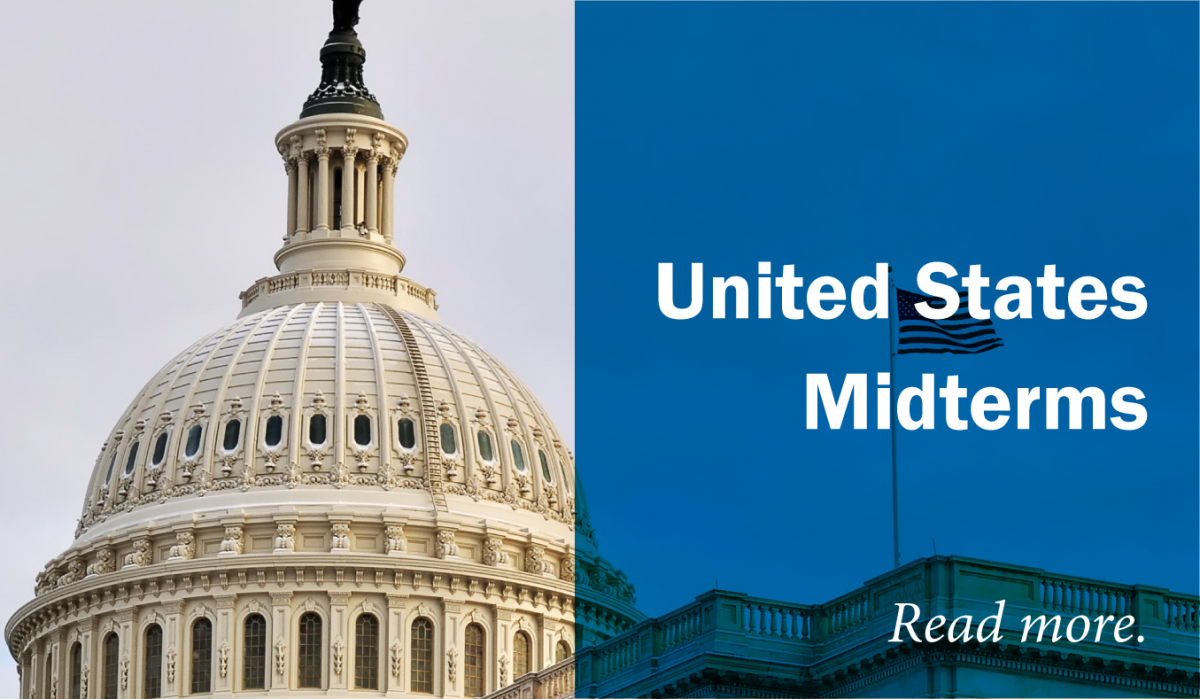Do Not Look for Foreign Policy Change
"Trump’s control over the GOP and the division among Democrats leaves a United States that will remain divided and distracted." –Jamie Fly
If history is any indication, Democrats will do well in the November midterm elections. According to Charlie Cook of The Cook Political Report, “the president’s party almost always loses House seats, which has happened in 35 out of the 38 midterm elections (92 percent) since the end of the Civil War.”
Democrats are banking on anti-Trump fervor to create a blue wave that they hope will sweep them into power in the House of Representatives (and maybe Senate) and in a position to take back the White House in 2020. Yet the political story of recent weeks has been the resurgence of Republican energy in many races. President Trump is barnstorming the country, attempting to energize his base to vote in the midterms, which is often one of the greatest challenges for U.S. congressional campaigns because turnout in non-presidential years often hovers around 40 percent.
The president has been helped by his opposition. Trump has consolidated his support among Republicans with the successful Senate confirmation of Brett Kavanaugh to the Supreme Court. Many Republicans who had been openly skeptical of Trump admired his steadfast support for his nominee, who came under fire for alleged sexual misconduct as a young man. Many Republicans viewed the Democrats’ antics as they attempted to block Kavanaugh as evidence of a mob mentality taking hold of the Democratic Party. Images of angry progressives clawing at the doors of the Supreme Court or a Republican Senator and his wife chased out of a DC restaurant by screaming protesters have played on an endless loop across conservative media.
In part because of this, the Republican Party is more the party of Donald Trump today than at any point since his acceptance of the party’s nomination in July 2016. Despite his polarizing effect on the country, the president’s approval among Republicans is near 90 percent. Trump supporters see a booming economy, the lowest unemployment rate in nearly 50 years, a stock market that has achieved more than 100 record highs since Trump’s inauguration, a successful effort underway to remake the federal courts with conservative judges, tax reform legislation passed, and popular foreign policy moves supporting Israel.
The midterms are likely to disappoint those expecting a significant change in U.S. foreign policy after November. If anything, they will mark the start of the 2020 campaign for the presidency.
The Democratic opposition is focused on energizing the urban elites. The Democrats will face significant challenges if they do win back the House. Angry opposition to Donald Trump is not a governing strategy. Democrats remain divided about many key policy issues as well as tactics. While Nancy Pelosi appears to want to remain speaker, a new generation of House Democrats will be eager to turn a new page and present a different face to the country. Some activists want a Democratic majority to immediately attempt to impeach the president. Others want to legislate and provide a policy contrast to Republicans. In the Senate, a whole host of prospective 2020 Democratic presidential candidates are already beginning to jostle for attention and airtime, a dynamic that factored heavily into the Kavanaugh battle (see section on U.S. Presidential Candidates).
The net result is a United States that will remain divided and distracted for the last two years of Donald Trump’s first term in office. While many Republicans in Congress still have significant foreign policy disagreements with the president, the politics of Democratic opposition will make it more difficult politically for them to serve as a check on Trump administration actions. While Democratic opinion leaders in Washington criticize the president’s treatment of allies, his handling of relations with Russia, and conduct of negotiations with North Korea or withdrawal from the Iran nuclear agreement, there is little evidence that many voters are prioritizing these issues. In fact, an NBC News/Wall Street Journal Survey in June found that only 6 percent of registered voters indicated that foreign policy and terrorism was a top priority for them. In this election, like most, foreign policy plays a minor role. Americans are divided on Russian interference and the Iran agreement. Many Americans across both parties support the president’s demands for greater burden-sharing by allies, fairer trade deals, and a skepticism of ongoing overseas commitments, especially in the Middle East. It will thus be difficult for Democrats to claim much of a mandate for specific foreign policy goals if they do take the House. If they do decide to advance an alternative agenda to the president’s, their tactics may increase Republican support for the president even more.
The midterms are likely to disappoint those expecting a significant change in U.S. foreign policy after November. If anything, they will mark the start of the 2020 campaign for the presidency. That race, and the fate of Donald Trump’s re-election bid, will be the key determinant of U.S. foreign policy in the years to come. It remains to be seen whether the Democrats will be able to mount a foreign policy critique of the president that resonates with voters and reverses the trend of the last ten years toward an America disengaging from its traditional leadership role.
Read the full publication »
Photo Credit: AVN Photo Lab / Shutterstock
